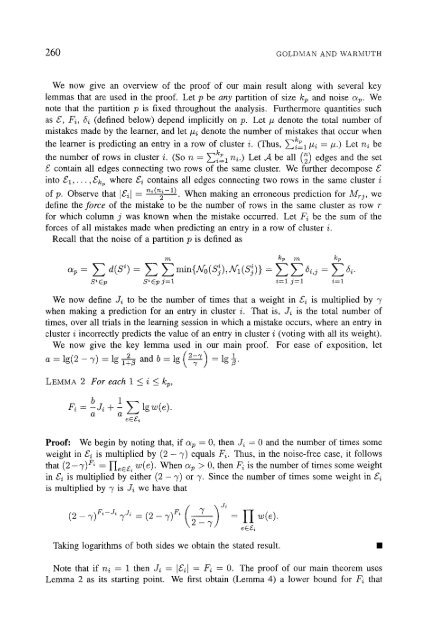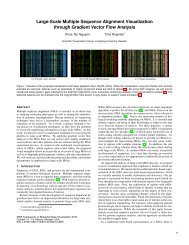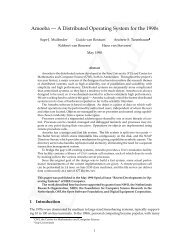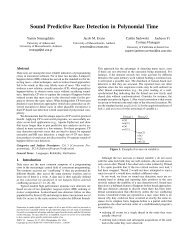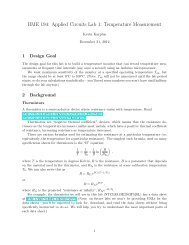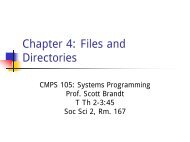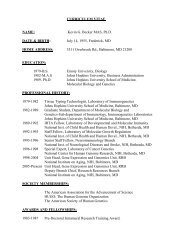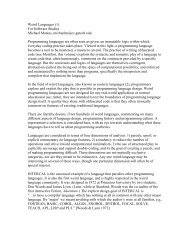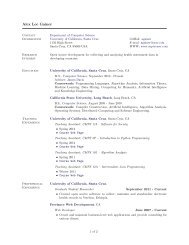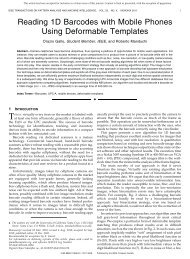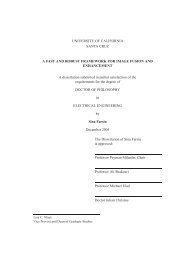Learning binary relations using weighted majority voting
Learning binary relations using weighted majority voting
Learning binary relations using weighted majority voting
Create successful ePaper yourself
Turn your PDF publications into a flip-book with our unique Google optimized e-Paper software.
260 GOLDMAN AND WARiVIUTH<br />
We now give an overview of the proof of our main result along with several key<br />
lemmas that are used in the proof. Let p be any partition of size kp and noise c~p. We<br />
note that the partition p is fixed throughout the analysis. Furthermore quantities such<br />
as g, Fi, ~~ (defined below) depend implicitly on p. Let # denote the total number of<br />
mistakes made by the learner, and let #i denote the number of mistakes that occur when<br />
kp<br />
the learner is predicting an entry in a row of cluster i. (Thus, ~i=l #i = #-) Let ni be<br />
kp<br />
the number of rows in cluster i. (So n = ~i=l nj.) Let A be all (~) edges and the set<br />
g contain all edges connecting two rows of the same cluster. We further decompose g<br />
into gl,..-, gkp where gi contains all edges connecting two rows in the same cluster i<br />
of p. Observe that/gd = n~(n~-l) 2 • When making an erroneous prediction for M~j, we<br />
define the force of the mistake to be the number of rows in the same cluster as row r<br />
for which column j was known when the mistake occurred. Ler Fi be the sum of the<br />
forces of all mistakes made when predicting an entry in a row of cluster i.<br />
Recall that the noise of a partition p is defined as<br />
O~p<br />
m<br />
d(S~) = E E min{Af°(S~)'N'l(S~ )} =<br />
S i Cp S ~ Cp J= 1<br />
~~ kp<br />
i=1 j=l i=1<br />
We now define Ji to be the number of times that a weight in gi is multiplied by 3"<br />
when making a prediction for an entry in cluster i. That is, Ji is the total number of<br />
times, over all trials in the learning session in which a mistake occurs, where an entry in<br />
cluster i incorrectly predicts the value of an entry in cluster i (<strong>voting</strong> with all its weight).<br />
We now give the key lemma used in our main proof. For ease of exposition, let<br />
a = lg(2 - 3`) = lg l--4-fi 2 and b=lg(2-'~'~ = lg~.<br />
\'Y2<br />
LEMMA 2 For each i < i < kp,<br />
1<br />
Fi = b ji + - ~-~"<br />
eE/~<br />
Proof: We begin by noting that, if C~p = 0, then J~ = 0 and the number of times some<br />
weight in gi is multiplied by (2 - 7) equals Fi. Thus, in the noise-free case, it follows<br />
that (2-7) Fz = [IeeE, w(e). When C~p > 0, then Fi is the number of times some weight<br />
in gi is multiplied by either (2 - 3') or 7. Since the number of times some weight in gi<br />
is multiplied by 3' is Ji we have that<br />
= H ~(~).<br />
eßg~<br />
Taking logarithms of both sides we obtain the stated result.<br />
Note that if ni = 1 then Ji = Igi[ = Ei = 0. The proof of our main theorem uses<br />
Lemma 2 as its starting point. We first obtain (Lemma 4) a lower bound for F~ that<br />
[]


